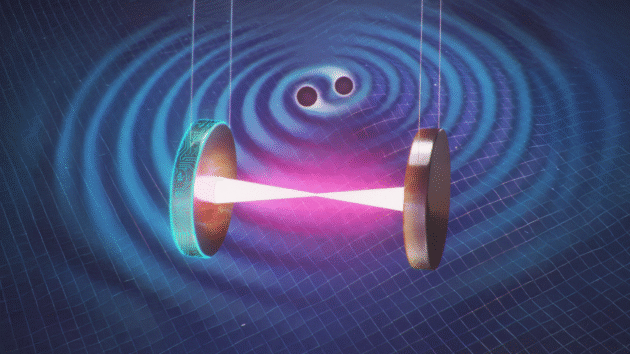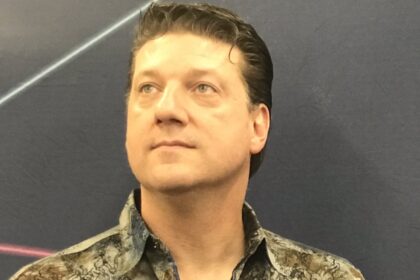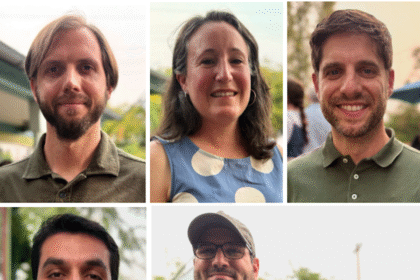The Laser Interferometer Gravitational-Wave Observatory, or LIGO, has already won its researchers a Nobel Prize — and now artificial intelligence is poised to take LIGO’s search for cosmic collisions to the next level.
Google DeepMind and the LIGO team say they’ve developed an AI tool called Deep Loop Shaping that has been shown to enhance the observatory’s ability to track gravitational waves — faint ripples in the fabric of spacetime that are thrown off by smash-ups involving black holes and massive neutron stars.
The researchers describe the technique in a proof-of-concept study published today by the journal Science. They hope to make Deep Loop Shaping part of routine operations at LIGO’s detectors in Louisiana and on the Hanford nuclear site in Washington state.
“Deep Loop Shaping is revolutionary, because it is able to reduce the noise level in the most unstable and most difficult feedback loop at LIGO,” lead author Jonas Buchli, a research scientist at Google DeepMind, told reporters.
The existence of gravitational waves was predicted by Albert Einstein a century ago, but they were first observed directly only in 2015, using LIGO’s twin 2.5-mile-long interferometers. That feat was recognized with the Nobel Prize in physics in 2017. Since then, the LIGO team has worked to increase the sensitivity of the detectors, but it’s not an easy task.
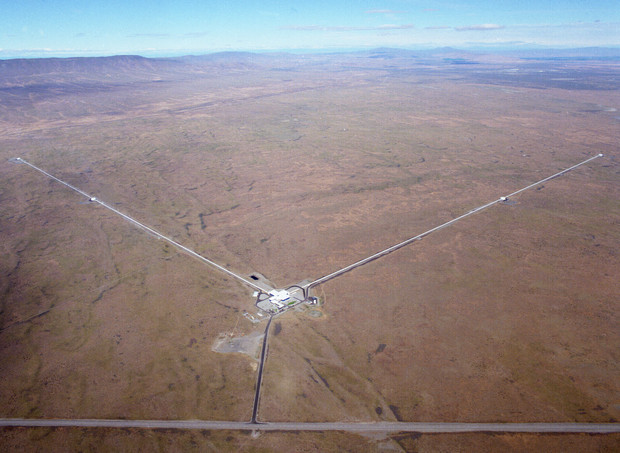
LIGO’s system of mirrors and precision laser beams have to register spacetime warps that amount to just one-10,000th the width of a proton. At that level of sensitivity, perturbations from distant earthquakes and ocean waves can jiggle the mirrors enough to make a difference in what’s registered by the detectors.
Researchers developed sophisticated techniques — including some that rely on AI — to keep the 88-pound mirrors still and cancel out the “noise” from such perturbations. But compensating for that noise introduces a different kind of disturbance.
“The hardest problem left is, how do you keep everything so still without disturbing your measurement?” said Rana Adhikari, a member of the LIGO team at Caltech. “That ‘controls noise’ has been bedeviling us for decades and decades.”
Adhikari compared the problem to trying to hold a mirror still with your bare hands. “If you try to keep it really still, your hands start to shake because you’re holding it tightly,” he said. “This method takes away the shaking.”
Google’s engineers worked with LIGO’s scientists to develop software that was trained on simulated gravitational-wave readings, using a process known as reinforcement learning.
“Basically, they were running dozens of simulated LIGOs in parallel,” Adhikari said in a news release. “You can think of the training as playing a game. You get points for reducing the noise, and dinged for increasing it. The successful ‘players’ keep going to try to win the game of LIGO. The result is beautiful — the algorithm works to suppress mirror noise.”
The proof-of-concept test results, based on an hour’s worth of LIGO data from the detector in Louisiana, showed that Deep Loop Shaping could quiet the motion of the mirrors 30 to 100 times better than traditional noise-reduction methods alone.
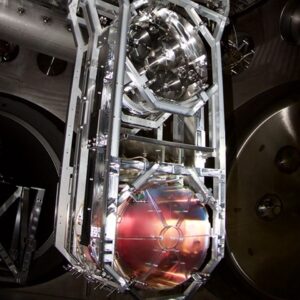
Study co-author Jan Harms, a professor at Italy’s Gran Sasso Science Institute, said the technique could open up a new frontier in astronomy.
“We are really excited about the potential to advance gravitational-wave science with Deep Loop Shaping,” he said. “More specifically, what we can now do is open a new frequency band for gravitational-wave observations, toward the low-frequency end.”
Harms said the opportunity was analogous to expanding the range of a telescope to take in infrared or X-rays as well as optical wavelengths. With greater sensitivity at lower frequencies, LIGO could do a better job of detecting the collisions of neutron stars or intermediate-mass black hole binaries. LIGO could also provide more advance warning of imminent cosmic collisions.
“What you can do is a pre-merger alert, so you can let people know [that] a minute from now, two neutron stars will merge,” Harms said. “And then, if you have just enough detectors online, you can even point to a specific patch in the sky and tell them, ‘Look there and wait for it.’”
With all the talk about AI hallucinations, should people be worried that Deep Loop Shaping could produce false data? “I think the question of ‘Will it misbehave after it’s running a year’ is a legitimate question, but we also worry about that for our classical methods, and so we monitor all of these things,” Adhikari said.
“This is a new area for us, so I think we’ll be learning as we go along, and we’ll be developing methods to veto any sort of misbehavior, not just from this system, but even our classical systems that do misbehave sometimes,” he said.
In the next phase of the rollout, the LIGO team plans to put Deep Loop Shaping through longer test runs that could go on for days or weeks at a time — in Louisiana, at Hanford and eventually at LIGO-India. “This week is the time when we’re going to start to have those discussions,” Adhikari said.
Deep Loop Shaping, and programs like it, could well become part of the standard engineering toolkit — not just for gravitational-wave detectors, but also for other applications where components have to be controlled with high precision. “This is about applications in aerospace, for example,” Harms said. “Navigation or manufacturing, or generally noise reduction in systems, or also civil engineering.”
The technology might even find its way into noise-canceling headphones. And Buchli said there may be still other applications that engineers haven’t yet thought of.
“I think once we send this out, hopefully some more people come to think, ‘Oh, actually, gee, I have this really hard control problem. I think I will try that,’” he said.
Buchli, Adhikari and Harms are among 30 authors of the Science study, “Improving Cosmological Reach of a Gravitational Wave Observatory Using Deep Loop Shaping.”
Read the full article here



